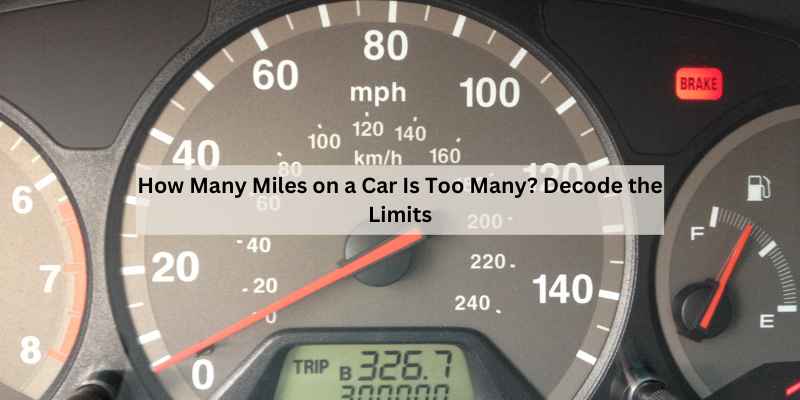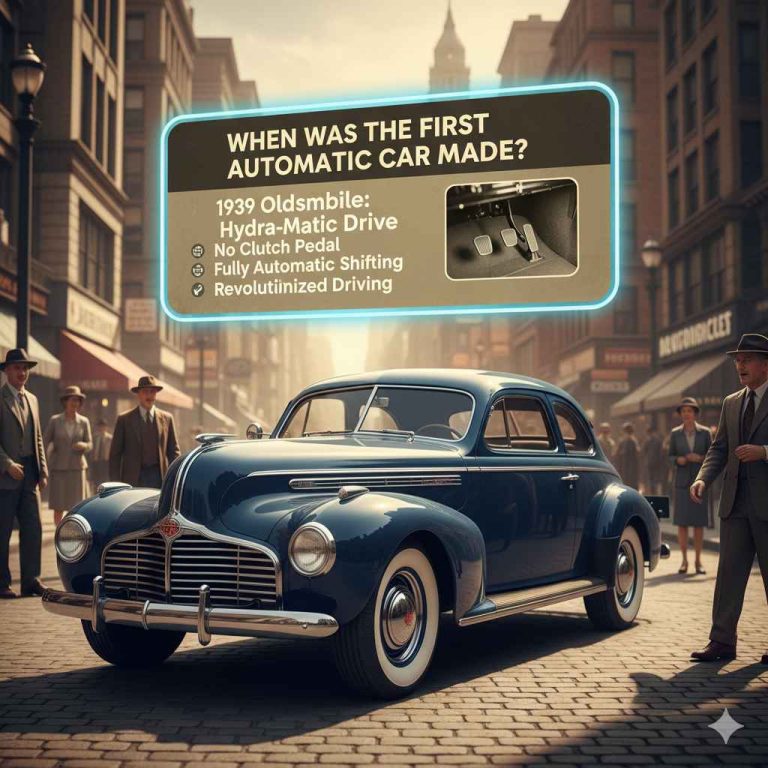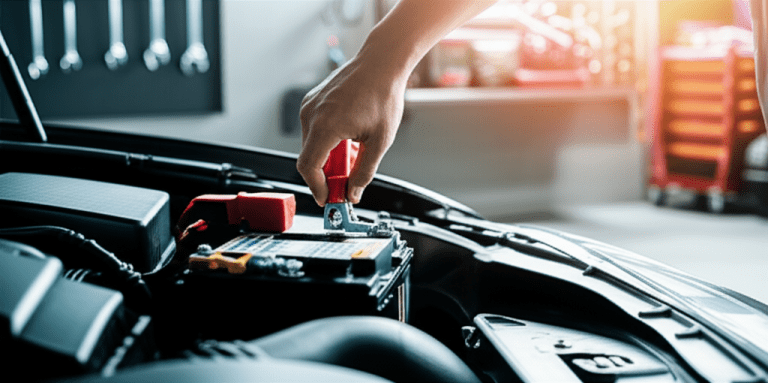How Many Miles on a Car Is Too Many? Decode the Limits
The average car has about 12,000 to 15,000 miles driven each year. A well-maintained vehicle typically lasts around 150,000 to 200,000 miles.
Choosing the right car involves understanding its mileage. Mileage indicates how much the vehicle has been used and its potential lifespan. High mileage can signal wear and tear, while low mileage often suggests less usage but may not guarantee better condition.
Factors like maintenance history, driving conditions, and the type of car also play crucial roles. Buyers should consider these aspects to make informed decisions. Whether purchasing new or used, understanding mileage helps ensure you choose a reliable vehicle that fits your needs. Knowledge about mileage can save you from unexpected repairs and costs.
Assessing Vehicle Longevity
Mileage and age are key factors in assessing vehicle longevity. A car’s mileage indicates how much it has been used. A lower mileage usually means less wear and tear. However, an older car may have its own unique issues.
Many factors influence a car’s lifespan. These include maintenance, driving habits, and environmental conditions. Regular service helps keep a car running well. Aggressive driving can cause more damage over time. Cars in harsh climates may wear out faster than those in milder areas.
| Factor | Impact on Lifespan |
|---|---|
| Maintenance | Regular service extends vehicle life. |
| Driving Habits | Gentle driving reduces wear and tear. |
| Environmental Conditions | Harsh climates can accelerate deterioration. |
Myth-busting High Mileage Stigmas
Many believe that high mileage cars are always unreliable. This is not true. A well-maintained car can last many miles without issues.
Another common myth is that all high-mileage vehicles are fuel-inefficient. In reality, many older models can be quite efficient. Regular maintenance plays a big role in this.
Real risks come from poor upkeep. A car with high mileage but a good service record can be a great buy. Look for vehicles with detailed maintenance logs.
| Common Misconceptions | Real Risks |
|---|---|
| High mileage means bad performance | Poor maintenance leads to issues |
| All high-mileage cars are fuel-inefficient | Service history is key to reliability |
Key Mileage Milestones For Cars
The initial depreciation of a car happens quickly. In the first year, a car can lose 20% to 30% of its value. This drop often makes new cars a poor investment.
Major maintenance checkpoints are vital for a car’s lifespan. Regular checks at 30,000, 60,000, and 100,000 miles can save money. These milestones help prevent larger issues.
| Mileage | Maintenance Task |
|---|---|
| 30,000 | Oil change, tire rotation |
| 60,000 | Replace air filter, check brakes |
| 100,000 | Timing belt replacement, fluid checks |
Understanding Maintenance Records
Regular service is vital for keeping a car in good condition. It helps prevent breakdowns and extends vehicle life. Skipping maintenance can lead to costly repairs. Always check the service history before buying a used car. A well-documented history shows careful ownership.
Look for records of oil changes, tire rotations, and brake inspections. These show that the car received proper care. The mileage at each service is also important. It helps understand the car’s usage and potential wear.
| Service Type | Frequency |
|---|---|
| Oil Change | Every 3,000 – 5,000 miles |
| Tire Rotation | Every 5,000 – 7,500 miles |
| Brake Inspection | Every 10,000 miles |
Signs Of A Well-maintained High-mileage Car
The exterior of a high-mileage car should show minimal wear. Check for rust or dents. A well-maintained car often has a clean paint job and intact windows. Inside, the seats should be in good shape. Look for stains or excessive wear on the upholstery. The dashboard should have no cracks or missing parts.
Engine health is crucial for high-mileage cars. Regular oil changes show good maintenance. Check for leaks under the car, which may indicate problems. A smooth idle and quiet operation are signs of a healthy engine. Pay attention to warning lights on the dashboard. They can signal issues that need attention.
The Impact Of Make And Model
Different car brands have unique reputations for longevity. Some brands consistently produce cars that last many miles. Toyota and Honda are well-known for their reliable vehicles. These brands often reach over 200,000 miles with regular maintenance.
Other brands also earn praise for durability. Subaru models are popular for their all-wheel drive and long lifespan. Ford trucks, especially the F-150, are famous for their toughness and high mileage. These vehicles often serve owners for many years.
| Brand | Reputation |
|---|---|
| Toyota | Reliability and Longevity |
| Honda | Durable and Efficient |
| Subaru | All-Wheel Drive and Longevity |
| Ford | Toughness in Trucks |
When To Consider A High-mileage Vehicle
Buying a high-mileage vehicle can be a smart choice. It often costs less than new cars. Consider the initial price and potential repair costs. A car with high miles might need more maintenance. However, it can still be reliable if well cared for.
Look at the vehicle’s history. A good service record can show how well it was maintained. Check for any major repairs. Some cars can last longer with proper care, even with high mileage.
| Factor | Cost Benefit |
|---|---|
| Lower Purchase Price | More affordable upfront |
| Maintenance Costs | Can increase with mileage |
| Potential Longevity | Some cars last over 200,000 miles |
Navigating The Used Car Market
Understanding mileage is key to evaluating a used car’s value. High mileage can indicate more wear and tear. Cars with over 100,000 miles often face more repairs.
Consider the maintenance history. A well-maintained car can last longer, even with high mileage. Regular oil changes and services are a good sign.
Use online tools to check a car’s value based on its mileage. This helps in making an informed decision. Comparing similar cars in the market can also help.
For a reliable purchase, always get a mechanical inspection. This will uncover any hidden issues. Trustworthy dealerships often provide detailed reports on their vehicles.
Frequently Asked Questions
How Many Miles Is Too Much For A Car?
While there’s no definitive answer, generally, over 100,000 miles is considered high mileage. Cars with this mileage may experience more wear and tear. However, regular maintenance can extend a vehicle’s lifespan significantly. It’s essential to check service history and overall condition before purchasing a high-mileage car.
What Is The Average Mileage For A Car?
The average mileage for a car is around 12,000 to 15,000 miles per year. This can vary based on driving habits and location. For instance, urban drivers may accumulate fewer miles than those in rural areas. Always consider the vehicle’s age when evaluating its mileage.
How Does Mileage Affect A Car’s Value?
Mileage significantly impacts a car’s resale value. Lower mileage typically translates to a higher price. Buyers often perceive low-mileage cars as more reliable. Additionally, cars with high mileage may require more maintenance, influencing their overall worth in the market.
Can High Mileage Cars Be Reliable?
Yes, high mileage cars can be reliable if well-maintained. Regular oil changes and timely repairs are crucial. Many vehicles are built to last beyond 100,000 miles with proper care. However, it’s essential to assess individual vehicle history and maintenance records before making a decision.
Conclusion
Understanding how many miles are on a car can help you make informed decisions. High mileage doesn’t always mean a bad vehicle. Regular maintenance and care play key roles in a car’s longevity. Always consider mileage alongside service history. This approach ensures you choose a reliable vehicle for your needs.






